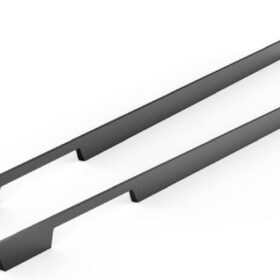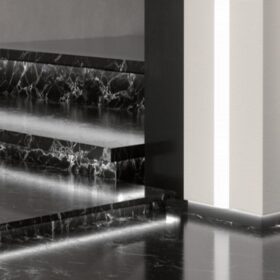The Role of Kitchen Furniture Handles in Modern Kitchens
In contemporary kitchen design, every element plays a crucial role in shaping the functionality, aesthetics, and overall ambiance of the space. Among these elements, kitchen furniture handles stand out as an indispensable component that seamlessly blends form and function. This article delves into the multifaceted role of kitchen furniture handles in modern kitchens, exploring their significance in terms of practicality, style, and the overall design scheme.
Functionality
Kitchen furniture handles are primarily responsible for providing a convenient and user-friendly experience while operating kitchen cabinets and drawers. They allow individuals to effortlessly open and close storage units, ensuring smooth and efficient kitchen operations. The ergonomic design of handles ensures a comfortable grip, minimizing strain on the hands and wrists. Additionally, handles facilitate the accessibility of stored items, making it easy to retrieve cookware, kitchenware, and other essentials.
Aesthetics
Beyond their functional purpose, kitchen furniture handles also serve as decorative elements that enhance the visual appeal of the kitchen space. They can complement or contrast with the cabinetry finish, creating a cohesive design scheme or adding a touch of个性. The wide array of styles, finishes, and materials available allows homeowners to customize their handles to match their personal preferences and kitchen aesthetics. From sleek and minimalist bar handles to intricate and ornate pulls, the choice of handles can significantly impact the overall look and feel of the kitchen.
Design Integration
Kitchen furniture handles play a vital role in integrating the kitchen design with the rest of the home’s interior. They act as a bridge between the kitchen and the adjacent spaces, connecting the functional zone with the living areas. The style and finish of the handles should complement the overall design scheme of the home, ensuring a seamless transition from one room to another. By carefully selecting handles that harmonize with the furniture, flooring, and wall finishes, homeowners can create a cohesive and aesthetically pleasing living environment.
Durability and Maintenance
In addition to their aesthetic and functional roles, kitchen furniture handles must withstand the demands of daily use and kitchen conditions. They should be constructed from durable materials, such as stainless steel, brass, or solid wood, to ensure longevity and resilience against wear and tear. Handles should also be easy to clean and maintain, as kitchens are prone to spills and stains. Regular cleaning with a damp cloth or mild detergent will help preserve the handles’ finish and extend their lifespan.
Multifunctionality
Modern kitchen furniture handles have evolved beyond their primary purpose of opening and closing cabinets. Some handles incorporate additional features, such as built-in LED lighting to illuminate the interior of cabinets or USB charging ports for electronic devices. These multifunctional handles enhance the convenience and functionality of the kitchen, making it a more efficient and user-friendly space. By integrating lighting and charging capabilities into the handles, homeowners can minimize clutter and maximize the utilization of space.
-
2024-11-29Top Trends in Modern Kitchen Cabinet Pulls for 2024
-
2024-11-28The Ultimate Guide to Modern Kitchen Cabinet Pulls- Materials, Styles, and Tips
-
2024-11-27Elevate Your Kitchen Design with These Must-Have Modern Cabinet Pulls
-
2024-11-26Sleek and Stylish- The Best Modern Kitchen Cabinet Pulls for a Contemporary Look










